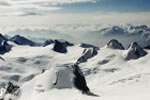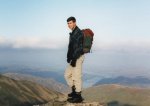


 |
 |
 |
Physical Geography
Pick the subject area you want from the index. More specific pages are listed in each sub-index. If you know of another topic you'd like covered, drop us an e-mail and we will do our best to help.
| BLANK |
BLANK |
| Select from the topics above, or just browse through the page titles and descriptions below
|
||
|
|
||
| Causes of Earthquakes Detecting Earthquakes Eyewitness accounts European Macroseismic Scale Gujarat Earthquake Impact of Earthquakes - the factors involved Kobe Earthquake Medvedev-Sponheuer-Karnik scale Mercalli Scale Predicting Earthquakes Richter Scale Online lesson: Causes of Earthquakes Online lesson: Detecting & Predicting Earthquakes Online lesson: Kobe Case Study |
Contents The 1995 Kobe earthquake in Japan is examined as a case study, and there are several eyewitness accounts of the 1989 Loma Prieta Earthquake in California, USA. Intended Audience |
Animals Dilatancy Elastic Limit Elastic Rebound Epicentre Fires Focus Hyogo-ken Nanbu Japan Kobe Loma Prieta Mercalli P, S, L waves Richter Seismograph Shocks Tsunami |
|
Alfred Wegener Fold Mountains Plate Tectonics and Continental Drift Ring Of Fire Structure of the earth Types of Plate Boundary Online lesson: Structure of the Earth Online lesson: Tectonics and Continental Drift |
CONTINENTAL DRIFT Contents Intended Audience |
Alfred Wegener Convection Core Crust Francis Bacon Mantle Mid-Atlantic Ridge Pangaea Plates Sial and Sima |
| Composite Volcano |
Contents Intended Audience |
Ash Clouds Crater Eruption Fumerole Lava Flow Magma Chamber Main Vent Secondary Cone Spirit Lake Strata |
| Ablation and Ablation Zone Accumulation and Accumulation Area Aretes Barren Zone Cirque Lake Climate history from glaciers Corries / Cirques Corrie Glaciers Deposition Features Distribution of glaciers worldwide Hanging Valleys Erosion Features Erosion Processes Global warming and glaciers How Glaciers Form and Flow Human uses Ice Ages Icecaps Ice Sheets Natural Hazards - Glaciers Origins Photographs of glacial features Piedmont Glaciers Pyramidal Peaks Revision Crossword Ribbon Lakes Siberian Permafrost Striations,Roche Moutonnee,Crag and Tail Suncups Tidewater glaciers Tourism in Antarctica U Shaped Valleys Valley Glaciers Weird facts about glaciers and icebergs |
Contents
Intended Audience Photographs and diagrams
are suited to most levels of study, and include photographs of case
studies in the UK and continental Europe. |
Ablation Abrasion Accumulation Arete Braided Streams Arete (origins) Cold Glacier Corrie Deformation Drumlin Esker Freeze thaw Glacial Lake Head Highland Icecap Kame Moraine Niche Plastic flow Plucking Roche Moutonnee Rock Debris Shear Plains Snowline Snow structure Striations Till Truncated spur U shaped valley U shaped valley (origins) Warm Glacier |
| Cliffs Coastal Management: Interested Parties Coastal Management: Physical Control Dunes Fetch Longshore Drift Mud Flats Salt Marsh Stacks Wavecut platforms Waves Coastal Revision Crossword |
Contents They also look at the ways in which human activity has altered the coast and continues to influence the development of coastal landforms.
Intended Audience Some material is relevant to more advanced students and those GCSE candidates seeking a greater understanding of coastal processes. Photographs and diagrams are suited to most levels of study.
|
Backwash Groynes Hard engineering Interested parties Soft engineering Stump Swash |
|
Rivers Revision Crossword
|
Contents
Intended Audience Photographs and diagrams are suited to most levels of study | |
Sorry, this content is being updated |
(Limestone and Chalk) Contents
Intended Audience Photographs and diagrams are suited to most levels of study | |
Sorry, this content is being updated
|
Contents
Intended Audience Photographs and diagrams are suited to most levels of study | |
|
Country Climate Info Beaufort Scale Permafrost melting and global warming What are clouds, and why does it rain? Weather in Europe right now Why are sunsets red? |
Contents
Intended Audience Photographs and diagrams are suited to most levels of study | |
Coastal Notes | Contents Intended Audience | Select the page that is of interest to you. All key words are listed alphabetically with their definitions. |